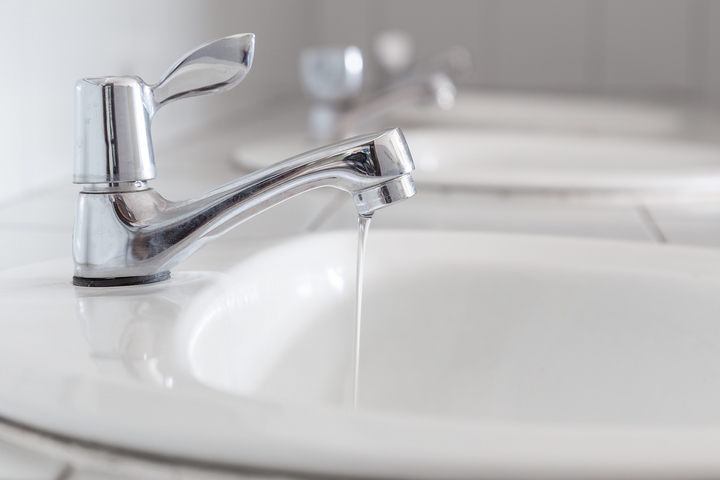Verified Approaches for Addressing Low Water Pressure in Your Home
Verified Approaches for Addressing Low Water Pressure in Your Home
Blog Article
Right here on the next paragraphs you can discover a lot of superb ideas relating to 10 Reasons for Low Water Pressure in Your House.

Low tide pressure in your house can be an irritating issue, influencing everything from bathing to cleaning meals. If you're experiencing weak water circulation, there are several possible causes and solutions to discover. In this guide, we'll talk about common reasons for low tide stress and practical actions to address the concern successfully.
Intro to Low Tide Stress
Low water stress happens when the flow of water from your faucets, showers, and various other components is weaker than typical. This can make everyday jobs much more challenging and much less effective. Understanding the causes of low water pressure is important to finding the best option.
Common Root Causes Of Low Water Pressure
Pipeline Obstructions
Gradually, pipelines can come to be blocked with natural resource, sediment, or particles, limiting the circulation of water. This is a typical problem in older homes with galvanized steel pipes.
Deterioration
Rust within pipelines can result in leakages and decreased water pressure. Corrosion build-up can restrict water circulation, specifically in maturing plumbing systems.
Faulty Pressure Regulatory Authorities
Pressure regulators are in charge of maintaining consistent water pressure in your home. If they malfunction, it can result in low water pressure or uneven flow throughout your house.
Metropolitan Water Supply Issues
Often, the trouble lies outside your home. Local water concerns, such as main line leakages or maintenance work, can momentarily decrease water pressure in your area.
Just How to Identify Low Tide Stress
Checking Faucets and Fixtures
Start by testing the water stress at various faucets and fixtures throughout your home. If the concern is isolated to certain locations, it might show local troubles.
Evaluating Pipelines
Examine visible pipes for indicators of leakages, rust, or clogs. Pay attention to any type of unusual sounds, such as knocking or rattling pipelines, which can show problems within the plumbing system.
Consulting with a Plumber
If you're not able to determine the source of low tide pressure, consider employing a specialist plumber to perform an extensive examination. They can identify underlying concerns and suggest proper solutions.
DIY Solutions to Take Care Of Low Tide Stress
Cleaning Up Aerators and Showerheads
Natural resources can gather in aerators and showerheads, minimizing water flow. Remove and cleanse these elements consistently to boost water pressure.
Flushing Hot Water Heater
Sediment buildup in the water heater can restrict flow and decrease effectiveness. Flushing the tank periodically assists eliminate sediment and preserve optimum efficiency.
Inspecting Pressure Regulator
Guarantee that the pressure regulator is functioning appropriately. Readjusting or replacing the regulatory authority can help bring back correct water pressure throughout your home.
Clearing Up Clogs in Pipes
For minor clogs, try using a plumbing snake or chemical drain cleaner to clear blockages in pipes. Beware when utilizing chemicals and comply with safety guidelines.
When to Call a Professional Plumber
If do it yourself efforts stop working to solve the concern or if you believe significant plumbing problems, it's finest to seek support from a licensed plumber. They have the proficiency and tools to deal with complex concerns securely and effectively.
Safety Nets to Keep Water Pressure
Routine Upkeep
Arrange regular upkeep for your plumbing system to avoid concerns such as deterioration, leakages, and blockages. Attending to minor troubles early can help prevent more significant repair work later.
Mounting a Stress Booster
Take into consideration mounting a pressure booster pump to improve water stress in areas with consistently reduced flow. This can be particularly beneficial for multi-story homes or properties with high-demand components.
Tracking Water Use
Bear in mind water usage habits and avoid ill-using the plumbing system. Simple adjustments, such as astonishing showers and washing loads, can help keep appropriate water pressure.
Conclusion
Taking care of low water pressure can be frustrating, yet identifying the underlying reasons and implementing suitable solutions can recover optimum circulation throughout your home. Whether it's cleansing aerators, evaluating pipelines, or speaking with a plumber, taking proactive steps can ensure a constant supply of water for your daily needs.
FOUR WAYS TO FIX LOW WATER PRESSURE NOW
Turning on a shower or faucet only to find the water comes out in a sad, slow drizzle is never a good feeling. How exactly are you supposed to wash a pan or take a quick shower when it takes 10 minutes just to rinse off a little soap? The good news is that when your water pressure is bad, there's always a cause: typically one that can be easily fixed. Here are some of the most common causes of low pressure and what you can do to fix the issue:
DEBRIS AND MINERAL DEPOSIT BUILDUPS
If you notice low water pressure from just one or two of the fixtures in your house, the problem likely has to do with debris buildup. Water is full of minerals and other debris, all of which can accumulate in your pipes and on your fixtures. This can cause a blockage that affects how much water flows through. To fix this, try filling a small plastic bag with white vinegar, and use a rubber band to hang it around your showerhead or faucet. Let the head of the fixture soak for a few hours, and the vinegar should loosen the deposits.
WATER LEAKS
Leaks are another common cause of low water pressure. If water is flowing out of your plumbing through a hole or crack before it can reach your fixture, the pressure coming out of the faucet or showerhead will be lower. A plumbing professional is your best bet for finding and repairing a leak in your water supply pipes.
Leaks are another common cause of low water pressure. If water is flowing out of your plumbing through a hole or crack before it can reach your fixture, the pressure coming out of the faucet or showerhead will be lower. A plumbing professional is your best bet for finding and repairing a leak in your water supply pipes.
FOUR WAYS TO FIX LOW WATER PRESSURE NOW
Turning on a shower or faucet only to find the water comes out in a sad, slow drizzle is never a good feeling. How exactly are you supposed to wash a pan or take a quick shower when it takes 10 minutes just to rinse off a little soap? The good news is that when your water pressure is bad, there's always a cause: typically one that can be easily fixed. Here are some of the most common causes of low pressure and what you can do to fix the issue:
DEBRIS AND MINERAL DEPOSIT BUILDUPS
If you notice low water pressure from just one or two of the fixtures in your house, the problem likely has to do with debris buildup. Water is full of minerals and other debris, all of which can accumulate in your pipes and on your fixtures. This can cause a blockage that affects how much water flows through. To fix this, try filling a small plastic bag with white vinegar, and use a rubber band to hang it around your showerhead or faucet. Let the head of the fixture soak for a few hours, and the vinegar should loosen the deposits.
WATER LEAKS
Leaks are another common cause of low water pressure. If water is flowing out of your plumbing through a hole or crack before it can reach your fixture, the pressure coming out of the faucet or showerhead will be lower. A plumbing professional is your best bet for finding and repairing a leak in your water supply pipes.
Leaks are another common cause of low water pressure. If water is flowing out of your plumbing through a hole or crack before it can reach your fixture, the pressure coming out of the faucet or showerhead will be lower. A plumbing professional is your best bet for finding and repairing a leak in your water supply pipes.
A VALVE ISSUE
If you have low water pressure throughout your home, check your main shut-off valve to make sure it's completely open. You may also want to see if there's a pressure-reducing valve installed. If there is, have a plumber help you adjust the settings to get the pressure you're looking for.
OTHERS USING WATER
Believe it or not, your low water pressure could be caused by your neighbors. If you notice low pressure at certain times of day, it may be because you and the people living next to you have similar schedules - when everyone is showering at the same time, the pressure will be lower in every home. Low pressure throughout the neighborhood may also be caused by an issue with your municipal water supply. If that's the case, call the supplier to see if they're working on the issue.
https://www.rotorooter.com/blog/water-leaking/low-water-pressure-fixes/

I stumbled upon that piece on 4 Ways to Troubleshoot Low Water Pressure when doing a search on the web. Appreciated our blog? Please share it. Help another person discover it. I am grateful for being here. Come back soon.
Call Report this page